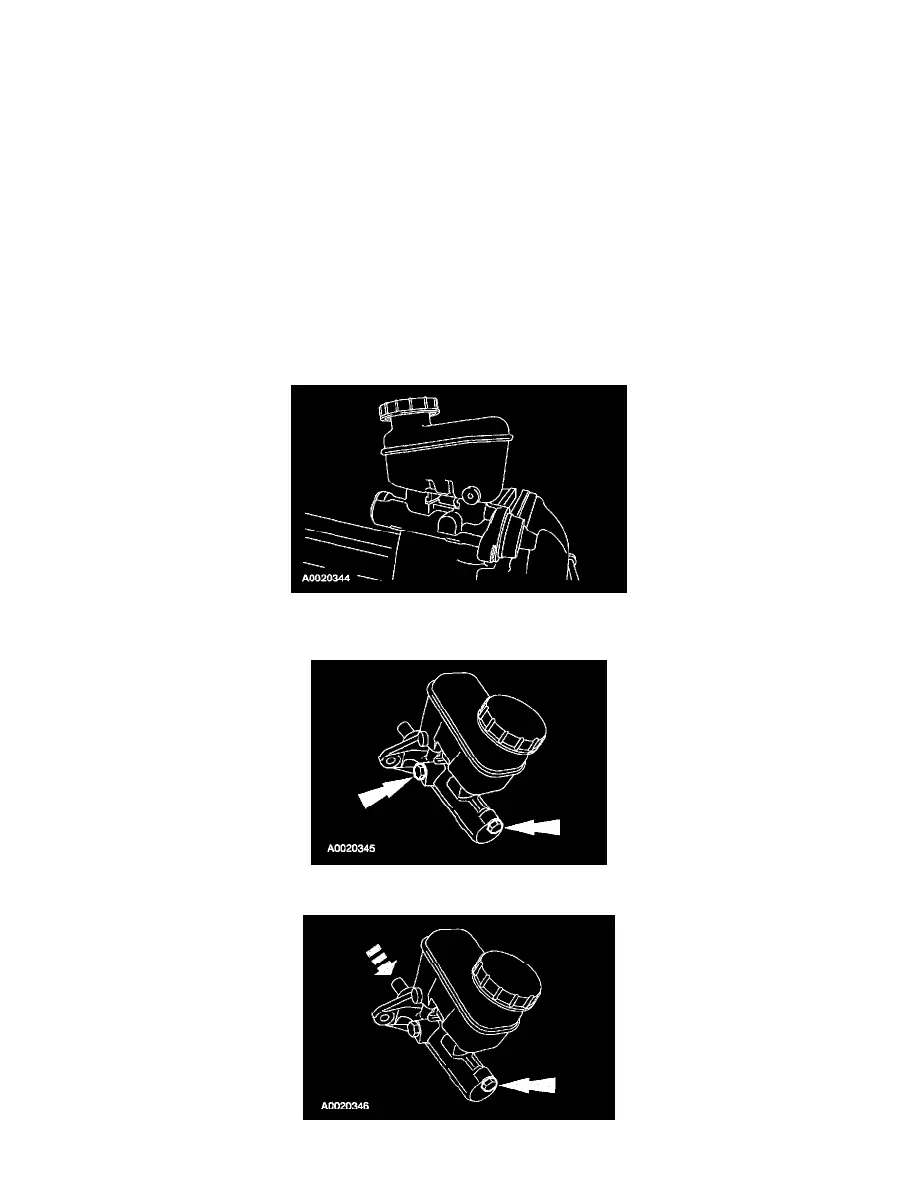Tribute LX 2WD V6-3.0L DOHC (2001)

Brake Bleeding: Service and Repair
Master Cylinder - Bench Bleed
Brake Master Cylinder - Bench Bleed
Warning: Use of any other than the approved DOT 3 brake will cause permanent damage to brake components and will render the brakes
inoperative. Failure to follow these instructions may result in personal injury.
Warning: Brake fluid contains polyglycol ethers and polyglycols. Avoid contact with eyes. Wash hands thoroughly after handling. If brake
fluid contacts eyes, flush eyes with running water for 15 minutes. Get medical attention if irritation persists. If taken internally, drink water
and induce vomiting. Get medical attention immediately. Failure to follow these instructions may result in personal injury.
Caution: Do not allow the brake master cylinder degas bottle to run dry during the bleeding operation. Keep the brake master cylinder degas bottle
filled with the specified brake fluid. Never reuse the brake fluid that has been drained from the hydraulic system.
Caution: Brake fluid is harmful to painted and plastic surfaces. If brake fluid is spilled onto a painted or plastic surface, immediately wash it with
water.
Note: When any part of the hydraulic system has been disconnected for repair or a new component is installed, air may enter the system, causing
spongy brake pedal action. This requires the bleeding of the hydraulic system after it has been correctly connected.
1. Support the brake master cylinder body in a soft. jaw vise, and fill the brake master cylinder degas bottle with specified brake fluid.
(1) Use DOT 3 brake fluid.
2. Install plugs in the front and rear brake outlet ports.
